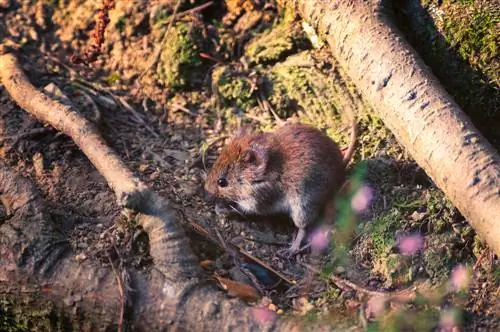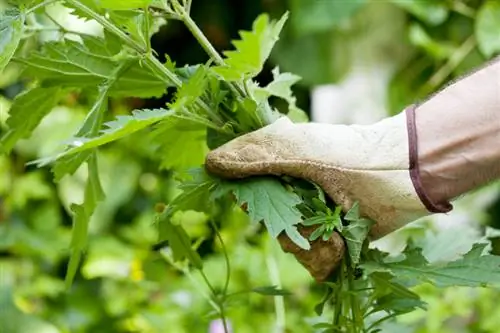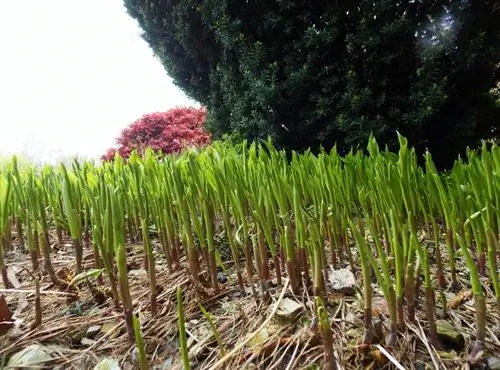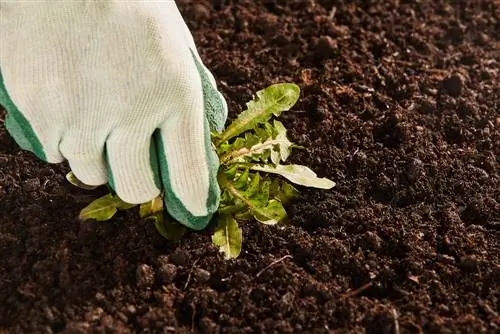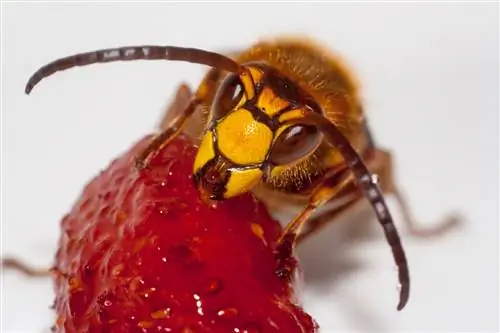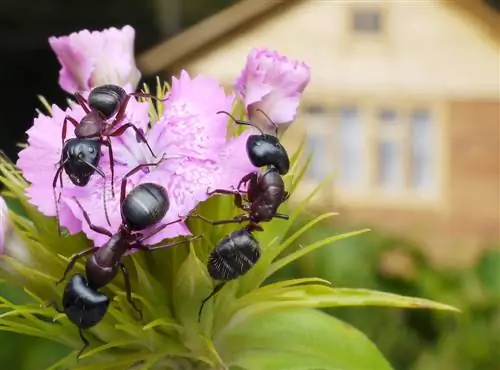- Author admin [email protected].
- Public 2024-01-02 03:03.
- Last modified 2025-01-23 11:22.
Voles are uninvited guests in the garden because they love our vegetables just as much as we do. They also eat tree and grass roots unnoticed, which can cause them to die. Find out below how to effectively get rid of voles from your garden.
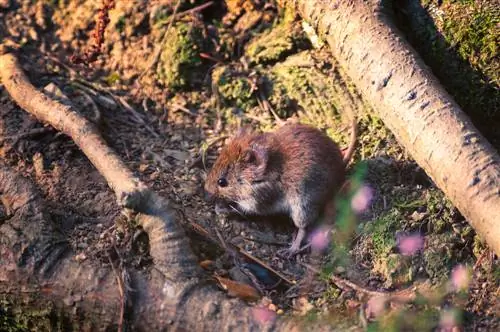
How can I effectively get rid of voles?
To effectively drive away voles, you can use unpleasant smells such as garlic or manure, use ultrasonic devices, flood the corridors or plant vole-repellent plants such as marigolds. Alternatively, you can catch voles with live traps and release them far away.
Signs of voles in the garden
Voles are often only recognized by their damage, because you rarely see the small rodents. But their work quickly becomes visible:
- Plants dead for no apparent reason
- Several small hills in the lawn
Excursus
Vole versus mole
Unlike moles, voles are purely herbivorous, which makes them a feared garden pest. Moles, on the other hand, are basically useful because they eat pests and avoid our fruits and vegetables. However, moles destroy the lawn with their large, numerous mounds, whereas voles tend to dig less aggressively.
Get rid of voles with home remedies
If you want to get rid of voles with home remedies, you have to stay consistently on the ball. Like most animals - and people - voles like their home and will only leave it if they have one or more good reasons to do so. Voles have a keen sense of smell and very good ears, which is why they can be easily driven away with strong smells and constant noise.
Repel voles with plants
Voles love plants, but not all of them! Some plants emit a smell that is unpleasant for voles, so they avoid them. Planting anti-vole plants at several points in the garden can deter the animals from invading or help persuade them to turn back.

Voles don't like marigolds and garlic at all
These plants don't like voles:
- Tagetes
- garlic
- Imperial Crown (poisonous!)
- Cross-leaved spurge (poisonous!)
- sweet clover
Tip
Plants alone are not enough to get a vole to move. However, they can be effective as a preventative or accompanying measure.
Get rid of a vole with a smell
Nobody likes it when it stinks all the time. You can scare away voles with the unpleasant smell of a few simple home remedies.
Voles run away from these smells:
- Old fish heads
- garlic
- elderberry tea
- Nettle manure - this home remedy is also a great fertilizer for your plants
- Vinegar
- Butter sour, alternatively buttermilk (better for you and the environment)
Put your homemade “scent bombs” into the entrances of the vole burrow and replace them every few days so that the smell doesn’t subside. Combinations of the remedies mentioned below are particularly effective.
Drive away voles with “noise”
To drive away voles with noise, you don't have to leave the radio on day and night. Instead, you can resort to sounds that you cannot hear yourself: ultrasound or barely audible vibrations.
Ultrasound against voles
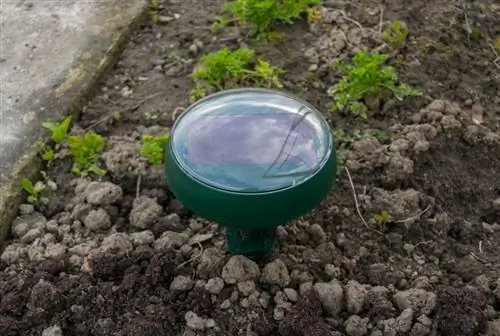
Ultrasonic devices emit very unpleasant sounds for voles
Ultrasound devices are available from specialist or online retailers for just €20. Place several devices near vole piles. It is important that the rod of the device is in the vole's passage. The big disadvantage of ultrasound devices is that they are also extremely unpleasant for other mammals such as squirrels or bats. So if you are one of the lucky ones who are allowed to house bats, you should avoid this method. If you have pets, purchase a pet-friendly device whose waves are inaudible to your loved ones.
Vole Scarecrow
Another, bat-friendly variant is a vole scarecrow. Here, sounds are generated with the help of the wind and directed into the earth and the vole's burrow. You can buy vole scarecrows in stores or simply build them yourself. Here are instructions for a decorative wind turbine, the vibrations of which voles don't like:

Flood vole exits
Wet feet in your own building? No vole can stand that in the long term. Therefore, flooding the tunnels is a good way to drive away voles. However, the procedure should be repeated regularly and combined with other methods.
Do the following:
- Locate multiple entrances to the vole burrow.
- Put a garden hose into the opening.
- Let the water run for several minutes.
- Then flood another entrance and repeat the process for all vole holes found.
Tip
Are you afraid the vole might drown? No worries! Voles are good swimmers and divers and will surely find a way out of the burrow before the water can harm them.
Catch a vole
Probably the most effective animal-friendly method of getting rid of a vole is to catch the vole. To do this you will need a live trap, fresh root vegetables and a little patience:
- First clean the live trap thoroughly with odorless material. Under no circumstances should you touch the trap without gloves so that it doesn't smell like humans.
- Put pieces of roots or other vole food in the trap as bait.
- Enlarge one of the entrances to the vole burrow so that the trap fits in.
- Place the trap in the hallway.
- Cover the hole again.
- Place at least one more trap in another entrance.
- Check the trap several times a day.
If the vole falls into the trap, drive it several kilometers away and release the mouse. Do not try to stress the animal with photos or by transferring it to other means of transport.
Background
Vole construction
Voles create a long, sophisticated tunnel system that can reach a total length of up to 25m. However, the building has comparatively few entrances: often there are no more than five heaps with a hole next to them.
Killing a vole
Since the vole is not protected, it can also be killed. This is not necessary because the range of alternatives is large and animal suffering should be avoided in any case. If you still decide to use this method, which is not very animal-friendly, you should use a high-quality shot trap that will at least kill the mouse safely and quickly. Great care must be taken when setting up the shot trap. There is a risk of injury!
Conventional mousetrap or pincer trap
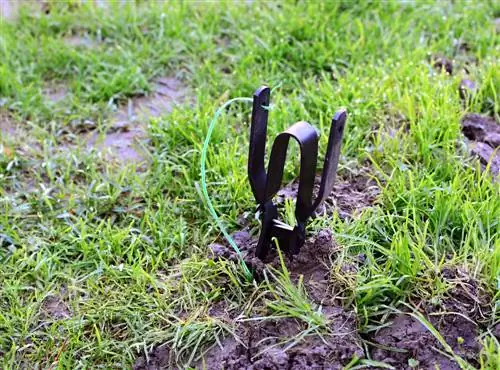
Plier traps are designed to kill voles - animal-friendly alternatives are preferable
Snap or pincer traps are not recommended, as conventional snap traps often cause mice painfully slow deaths. The trap does not always snap shut in the neck, which would result in a broken neck. Instead, the mouse is often captured on another part of the body. In this case, the mouse dies from internal bleeding or starves to death.
Frequently asked questions
What do voles not like?
Voles cannot tolerate strong, unpleasant smells or constant noise. Therefore, you can get rid of voles with certain scents and ultrasonic devices.
What smell drives voles away?
Garlic, marigolds, stinky fish, manure and butyric acid make voles run away.
Can you get rid of voles with water?
Voles don't like it when there's water in their passage. Flooding the hallways several times a day, in combination with other home remedies, can confirm to the vole that it would make sense to move.
How do I recognize voles in the garden?
Unlike moles, voles only make a few, smaller mounds and feed exclusively on plant foods. An infestation is often only recognized when plants die for no apparent reason and the roots are nibbled.
How many voles do I have in the garden?
The good news is: Voles are solitary creatures. Voles can only be found in pairs during mating season. The bad news: Voles can give birth eight times a year - up to four baby voles each time. Therefore, you should act quickly if you notice a vole infestation in the garden.

